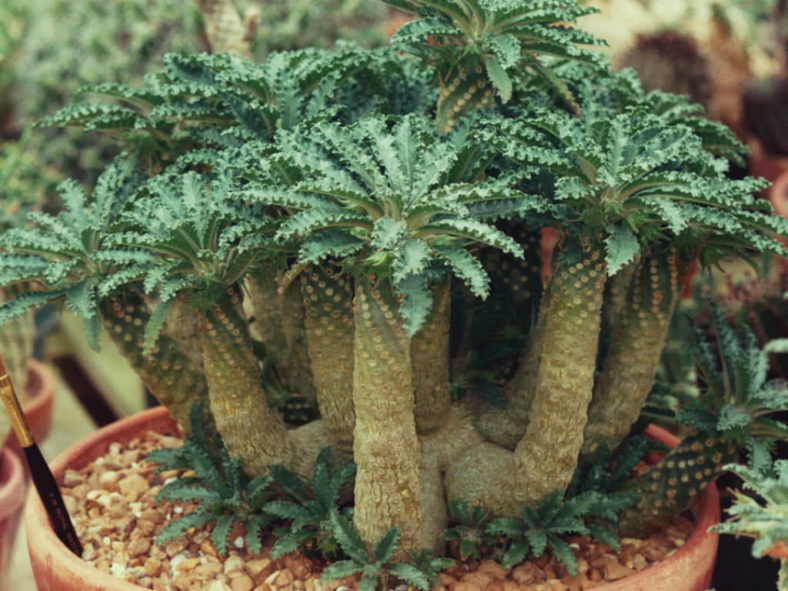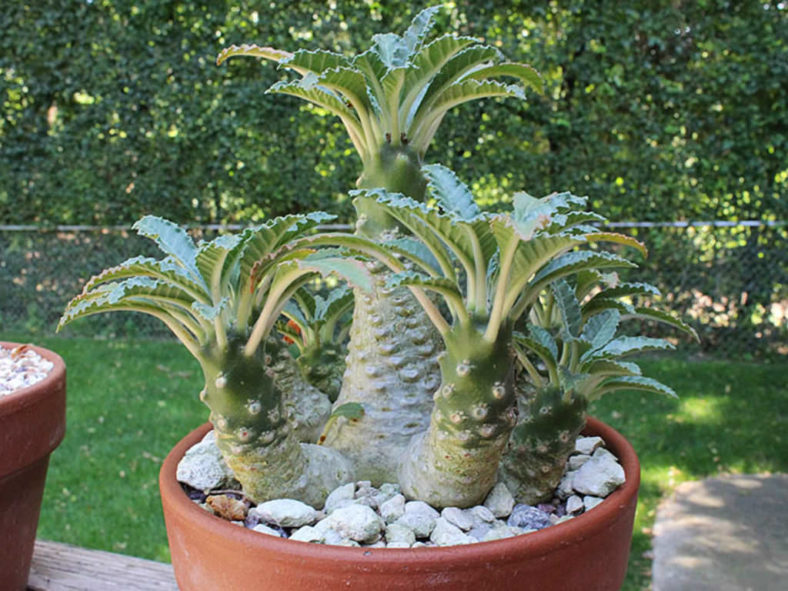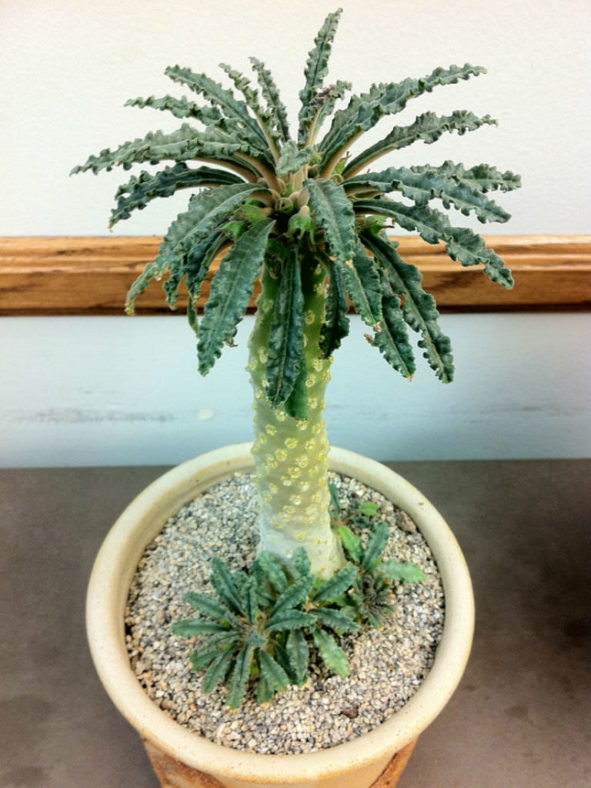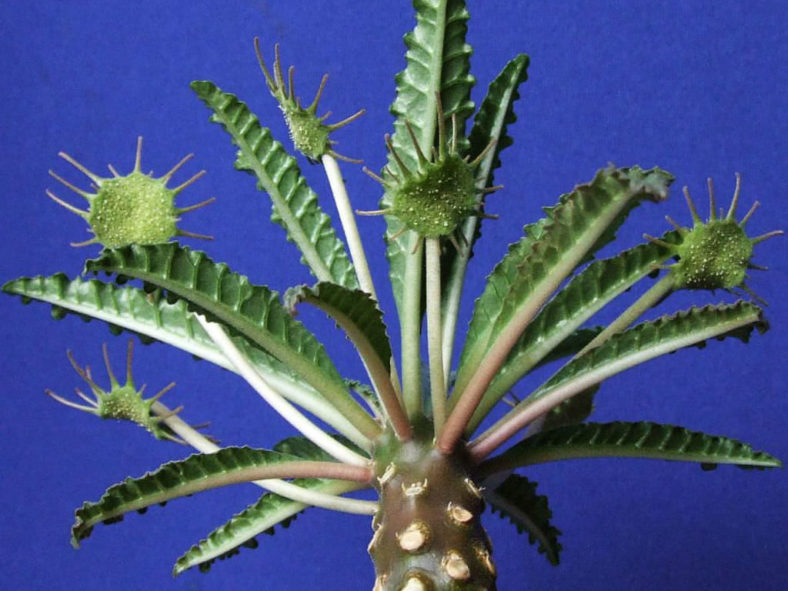Scientific Name
Dorstenia lavrani T.A.McCoy & M.Massara
Common Name(s)
Tabia Gorge Dorstenia
Scientific Classification
Family: Moraceae
Tribe: Dorstenieae
Genus: Dorstenia
Etymology
The specific epithet "lavrani" (pronounced "lav-RAH-nee") honors John Jacob Lavranos (1926-2018), a Greek-born South African insurance broker and botanist with a special interest in succulents.
Origin
Dorstenia lavrani is native to northern Somalia. It occurs north of Erigavo in the Taba'a Gap (Tabia Gorge), growing in moss-filled cracks on steep limestone.
Description
Dorstenia lavrani is an attractive plant that forms a symmetrical grove with many succulent, wax-like stems patterned with spiraling rows of whitish leaf scars and topped with a rosette of attractively crisped leaves. It resembles a compact grove of palm trees and is perhaps the most attractive of the Dorstenias. The stems can reach up to 8 inches (20 cm) in height and 1 inch (2.5 cm) in diameter. The leaves are elliptic to obovate, measuring up to 1.8 inches (4.5 cm) long and 0.7 inches (1.8 cm) broad.
The flowers occur in masses on fleshy receptacles that appear solitary in the leaf axils on peduncles that can grow up to 0.6 inches (1.5 cm) long. The receptacles can reach a diameter of 0.6 inches (1.5 cm). Dorstenia lavrani is the only species of Dorstenia that is dioecious, in which the male and female flowers are on separate plants.

How to Grow and Care for Dorstenia lavrani
Hardiness: USDA hardiness zones 10b to 11b: from 35°F (1.7°C) to 50°F (10°C).
Dorstenias are warm-loving plants that require slightly more water than typical succulents. They need a well-drained potting mix, and their water requirements vary by season. Water regularly from spring to fall. Allow the soil to dry slightly between waterings, but ensure it never dries out completely. These plants tend to enter at least partial dormancy during the winter months. During this period, reduce watering. Providing plants with a warm, sunny position can result in beautiful, compact-growing plants. It is recommended to fertilize plants occasionally during the growing season with a high-potash, high-phosphorus fertilizer.
Spring weather, with a pronounced diurnal temperature swing and frequent rainfall, can favor the development of fungal diseases, which should be treated preemptively with a systemic fungicide.
Dorstenias are generally propagated by seed. Many species are self-fertile. Their seeds are expelled explosively from the mature seed heads and are liable to populate pots several feet away. They can also be propagated by cuttings.
Learn more in "How to Grow and Care for Dorstenia."
Links
- Back to genus Dorstenia
- Succupedia: Browse succulents by Scientific Name, Common Name, Genus, Family, USDA Hardiness Zone, Origin, or cacti by Genus
Photo Gallery
Click on a photo to see a larger version.


